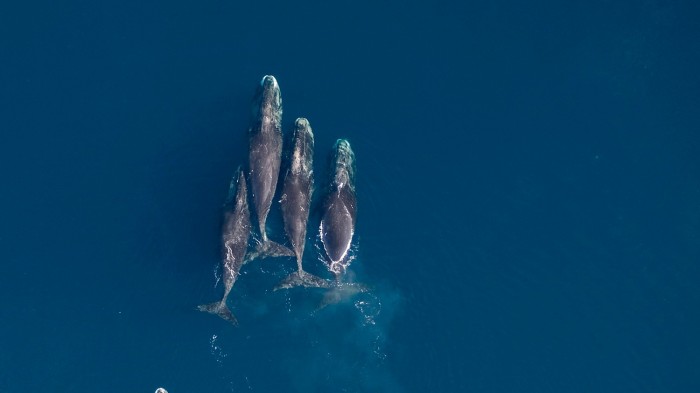Stay informed with free updates
Simply sign up to the Climate change myFT Digest — delivered directly to your inbox.
Landmark research on Arctic whale faeces over the past two decades has revealed how rising ocean temperatures are stoking an increase in algal toxins in marine food chains.
The heating in northern waters follows trends seen in other regions and is causing algal blooms that are potentially harmful to animals including humans, according to US National Oceanic and Atmospheric Administration (Noaa) data.
“Our results provide confirmative oceanic, atmospheric and biological evidence for increasing algal toxin concentrations in Arctic food webs due to warming ocean conditions,” said Kathi Lefebvre, the paper’s lead author and a research biologist at Noaa Fisheries.
This was particularly dramatic in the Arctic due to the rapid rate of warming and sea ice loss, she added.
The research published in Nature on Wednesday underscores how climate change monitoring relies on long-term data sets gathered by organisations such as Noaa, which is facing heavy budget cuts by US President Donald Trump’s administration.
Scientists examined bowel samples taken from more than 200 whales killed each year for subsistence between 2004 and 2022 by local populations in Alaska. Higher toxin levels were found when the ocean warmed and sea ice extent shrank, the researchers found.
The changes could threaten wildlife including food sources on which native Alaskan communities have long depended, the researchers said. Other studies in northern waters were finding dangerously high toxin levels in marine invertebrates such as clams, especially in the Chukchi and Bering Seas between Russia and Alaska, Lefebvre added.
Blooms of algae known as phytoplankton are a growing threat worldwide and have become more common in parts of both the Atlantic and Pacific oceans. They have a widespread impact because the organisms are at the base of the food chain and so can potentially affect any of the predators above them.
The latest study highlights a worrying “northward march” of phytoplankton species that produce toxins, said Prof Ailsa Hall, a biologist at the University of St Andrews. Most harmful algal blooms in the US had previously been seen in more southerly waters, such as off California and Florida, where mammals including sea lions and manatees had died in “mass mortality events”, she added.
“This research indicates that oceanic and prevailing conditions are becoming more favourable for the toxic species to take hold in the Arctic,” said Hall, an expert on the impact of contaminant and pathogen exposure on marine mammals. “Although the levels found in many of the faecal samples analysed were low, the proportion of samples containing toxins was high.”
The use of bowhead whales as long-term biological indicators provided rare decades-long insight into ecosystem health, said Marianna Chimienti, a quantitative ecologist at Bangor University’s ocean sciences school. This could be threatened if Noaa cutbacks hit long-term environmental monitoring that needs consistent sampling, she warned.
The Trump administration has slashed thousands of jobs at Noaa and proposed cutting the agency’s annual budget by a quarter.
“Disruptions could break vital data sets used to detect climate-linked trends, like those seen in this study,” Chimienti said.
“Reducing the scope of scientific programmes would limit our ability to protect biodiversity and ecosystems.”
